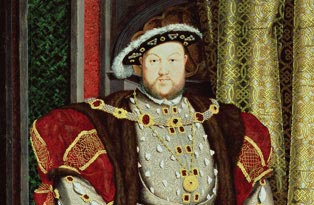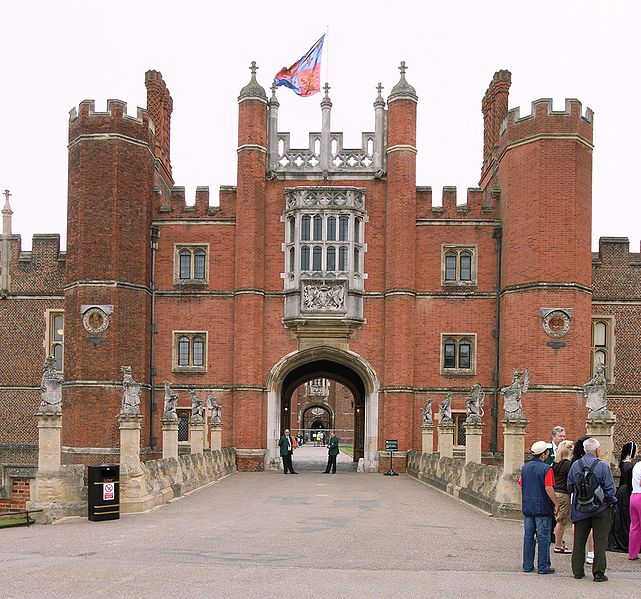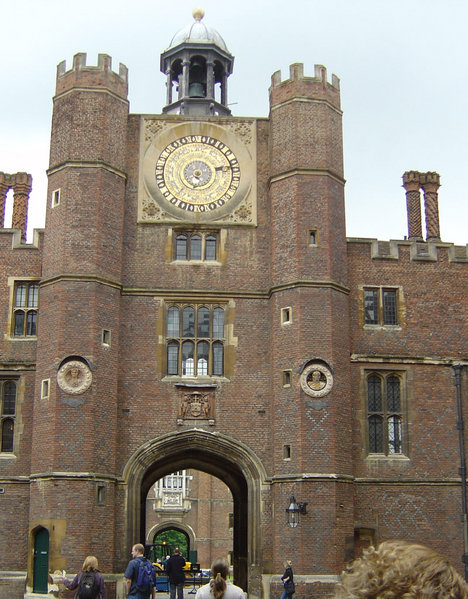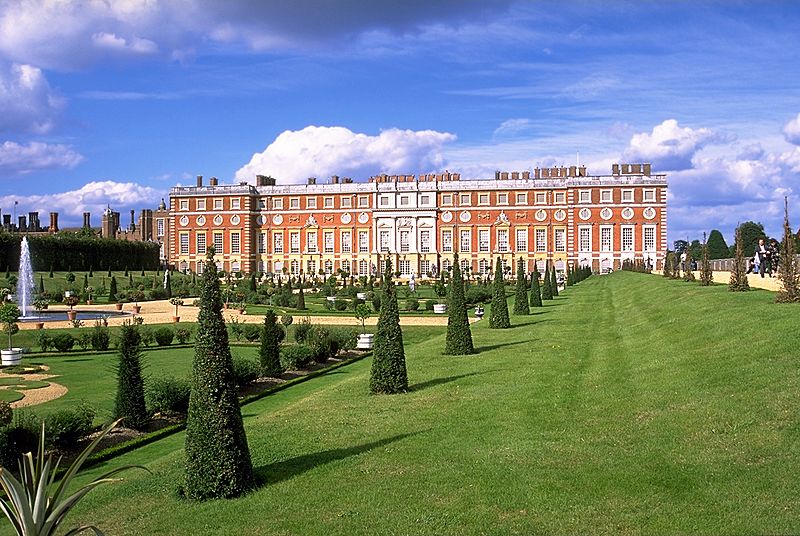London boasts many impressive palaces and castles, from Buckingham Palace to the Tower of London, but one of the most interesting and accessible may just be Hampton Court , situated on the River Thames in the southwest part of the city.
 Hampton Court Palace is perhaps most famous as the residence of King Henry VIII. The property actually was once under the ownership of Thomas Wolsey, the Archbishop of York, who acquired the estate in 1514. Wolsey oversaw new construction to the property, aiming to create a cardinal’s palace. In 1528, Wolsey gifted the palace to the king, who then began his own expansion of the property.
Hampton Court Palace is perhaps most famous as the residence of King Henry VIII. The property actually was once under the ownership of Thomas Wolsey, the Archbishop of York, who acquired the estate in 1514. Wolsey oversaw new construction to the property, aiming to create a cardinal’s palace. In 1528, Wolsey gifted the palace to the king, who then began his own expansion of the property.
 The palace continued to be a place of residence for the remaining royalty of the Tudor period, including Mary I and Elizabeth I. The palace then passed into the House of Stuart with the ascension of James I. For several decades, following the ill-fated reign of Charles I, Hampton Court was believed to be too old-fashioned for the royal family. The dual monarchy of William and Mary saw a period of rebuilding the palace, causing the demolition of half of the original Tudor palace in favor of contemporary styled buildings.
The palace continued to be a place of residence for the remaining royalty of the Tudor period, including Mary I and Elizabeth I. The palace then passed into the House of Stuart with the ascension of James I. For several decades, following the ill-fated reign of Charles I, Hampton Court was believed to be too old-fashioned for the royal family. The dual monarchy of William and Mary saw a period of rebuilding the palace, causing the demolition of half of the original Tudor palace in favor of contemporary styled buildings.
Further refurbishment and alterations occurred in the mid-18th Century under Kings George I and George II, who became the last monarchs to reside at Hampton Court. Due to the various additions made to the palace, Hampton Court contains two distinct architectural styles: the medieval Tudor, marked by steeply pitched roofs, large decorated chimneys, tall, narrow windows and doorways, and small window panes; and the Baroque style favored by the Stuarts, noted by its emphasis on playing with light and shade, colonnades, domes, and the interior creation of stately apartments.
 The interior of the palace has been decorated to reflect the two main periods of the Hampton Court, the early Tudor and late Stuart reigns. Many significant pieces of art are on display, as well as numerous examples of the decorative arts, including ceramics and tapestries. Much of the original palatial furniture occupies the rooms on display.
The interior of the palace has been decorated to reflect the two main periods of the Hampton Court, the early Tudor and late Stuart reigns. Many significant pieces of art are on display, as well as numerous examples of the decorative arts, including ceramics and tapestries. Much of the original palatial furniture occupies the rooms on display.
While the entire grounds of Hampton Court are worth exploring, there are particular areas that should be highlighted. For those with epicurean interests, Henry VIII’s kitchens are not to be missed. The kitchens are preserved to reflect the culinary style of King Henry’s Court and are, in fact, still used to prepare Tudor meals. The kitchens served the royal family for over two hundred years, spanning the 16th and 18th centuries, and also fed the hundreds of members of nobility who were entitled to eat in the palace. Today, the kitchens can be toured daily and on specific dates cooking demonstrations are featured, bringing the epicurean repertoire of the Tudor court to life.
Also not to be missed are the spectacular palace gardens. Totaling more than sixty acres, the gardens stretch from the palace to the banks of the Thames. Each month brings a variety of flowering plants, from the spring blooms of April to the roses in June to the changing colors of fall. Popular attractions among the palace gardens include the Privy Garden, a reconstruction of the original, early 18th Century garden; the Rose Garden; and the contemporary 20th Century Garden. Be sure to visit the Maze and meander among the half-mile of labyrinthine paths.
 Visitors can wander throughout Hampton Court and the accompanying gardens. Interpreters donning historic costumes lead group tours throughout the day and one can join such a tour free of charge. For a self-guided tour of the particular sections of grounds, be sure to acquire an audio guide. These are available in several languages and are free of charge. The audio tours provide insightful information of the kitchens, the Apartments of William III, Georgian Apartments, and a history of a young Henry VIII. The audio tour is well worth listening to and provides great context to the material culture on display and the historical figures who once resided in the palace.
Visitors can wander throughout Hampton Court and the accompanying gardens. Interpreters donning historic costumes lead group tours throughout the day and one can join such a tour free of charge. For a self-guided tour of the particular sections of grounds, be sure to acquire an audio guide. These are available in several languages and are free of charge. The audio tours provide insightful information of the kitchens, the Apartments of William III, Georgian Apartments, and a history of a young Henry VIII. The audio tour is well worth listening to and provides great context to the material culture on display and the historical figures who once resided in the palace.
Various cafes and coffee shops can be found on the grounds of the palace. Some visitors bring their own meals and picnic in any of the famous gardens.
Hampton Court and its gardens are open throughout the year, closing only December 24 – 26. The palace and gardens share similar hours of operation: 10:00 AM to 6:00 PM – late March through the end of October for the summer season; and 10:00 AM to 4:30 PM – November through most of March.


Comments